Contents
- 1. Origin and meaning of Tratak
- 2. Types of tratak
- 3. Benefits of tratak
- 4. Practical suggestions
- 5. The object of tratak (on what should one do tratak?)
- 6. Experiences and spiritual experiences (signs of progress)
- 7. What should one do if one is unable to do tratak?
- 8. Automatic occurrence of tratak?
- 9. Limitations
- 10. Comparison with other paths of Yoga
1. Origin and meaning of Tratak
A. Trutak (तृतक): Trut (तृत) means that which is broken yet existing in one line, e.g. _ _ _ _. The word tratak is derived from the word truti (तृटी). Tratak is the method of joining pieces which are linear, that is a method of creating a line of radiance with gradual efforts thus attempting to stabilize the gaze. When one says this occurs in half a nimesh, the nimesh or nimish refers to the duration required for the opening or closing of the eyelids. A 30th of a nimesh is known as a tatvar and a 100th of a tatvar is known as a truti.
B. Tru tiryayate (त्रु तीर्ययते), kakayate (काकयते) is a method of steadying one’s gaze akin to a crow, that is by fixing the gaze in one direction and turning around.
C. Tratak also means gazing continuously at one point with the mind or eyes, without blinking. One is supposed to stare at the object of tratak till it is impossible to keep the eyes open or till they start watering.
The object used for tratak is known as the ‘object of tratak’. (That on which one meditates is known as the ‘object of meditation’.)
2. Types of tratak
2.1 External tratak
External tratak means staring at an external object and bringing about concentration of the mind by steadying the gaze till it is no longer possible to do so.
2.2 Internal tratak
Internal tratak is looking at an object with inner vision, that is, with the mind, keeping the eyes closed. The main aim of doing tratak is to increase the power of concentration. By staring at an object, the power of concentration can be increased. Similarly, by imagining that one is staring at an object with the eyes actually closed, the objective of doing tratak is fulfilled. Hence, those who are blind or are unable to do tratak even for a few seconds, should do tratak imagining that they are ‘staring at a point’ (e.g. a point midway between the eyebrows).
2.3 Types of external and internal tratak
A. Tratak on a dot (bindu tratak) and tratak on an idol (murti tratak)
Tratak on a dot is concentrating one’s attention on a small dot and tratak on an idol is focussing it on an idol. As a result, mainly the gaze is steadied and it leads to increased concentration. (Refer point 4 B).
B. Tratak on a circle (vartul tratak)
First look at the small circle ‘A’ for one to two minutes and note whether you feel pleasant or distressed. Repeat the same with the big circle ‘B’ and then read further.
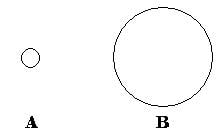 |
There were thirty-five seekers at a satsang (spiritual meeting). They had the following spiritual experiences.
| Experience | Figure ‘A’ | Figure ‘B’ |
| 1. Pleasant | 8 | 26 |
| 2. Distressing | 12 | 2 |
| 3. Nothing | 15 | 7 |
| Total | 35 | 35 |
The majority felt better looking at the bigger circle in comparison with the smaller one. The reason for this is given as follows : ‘यत् भूमा तत् सुखम् नाल्पे सुखमस्ति । – In Sanskrut, bhuma (भूमा) means vast. That which is vast gives happiness while that which is small does not’. – Upanishad. Based on this principle the majority felt better looking at the bigger circle.
C. Tratak while moving the gaze along the circumference of a circle (parigh tratak)
First move the eyes gradually along the circumference of the circle drawn above, in the clockwise direction, nine to ten times, commencing from the top. Note whether you feel pleasant or distressed. Then once again, commencing from the top, move the eyes nine to ten times gradually in the anti-clockwise direction. Once again note whether you feel pleasant or distressed. Then read further.
Thirty-seven seekers at a satsang (spiritual meeting) participated in this experiment and had the following spiritual experiences.
| Experience | Moving the gaze | |
| clockwise direction | anti-clockwise direction | |
| 1. Pleasant | 20 | 9 |
| 2. Distressing | 8 | 19 |
| 3. Nothing | 9 | 9 |
| Total | 37 | 37 |
Another experiment in which the participants were asked to move the gaze along the circumference of an imaginary circle, with the eyes closed, yielded similar results.
When the eyes were moved in the clockwise direction, first the Ida (moon) channel of the observers was activated. Hence when doing tratak most of them felt pleasant. As against this, when the eyes were moved in the anti-clockwise direction, the Pingala (sun) channel was operational, hence most people experienced discomfort. Since one feels pleasant while moving in the clockwise direction, circumambulation of an idol in a temple is performed in the same direction.
D. Tratak on a spiral ring (valay tratak)
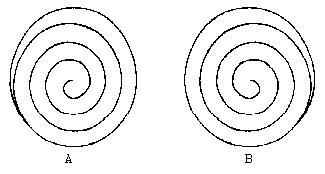 |
First look at both these figures for one to two minutes and record your observation. Then read further.
The same thirty-seven seekers from the previous experiment participated in this experiment. They had the following spiritual experiences.
| Experience | Figure ‘A’ | Figure ‘B’ |
| 1. Pleasant | 18 | 18 |
| 2. Distressing | 16 | 17 |
| 3. Nothing | 3 | 2 |
| Total | 37 | 37 |
Now commencing from the outer end of the figure ‘A’ move the gaze along the line till its inner end. Start from the outer end once again. Repeat this seven to eight times and record what you experience. Follow the same method when looking at figure ‘B’ and only then read further.
Seekers at the satsang (spiritual meeting) who participated in the previous and this experiment were the same and they had the following spiritual experiences.
| Experience | Figure ‘A’ | Figure ‘B’ |
| 1. Pleasant | 27 | 9 |
| 2. Distressing | 9 | 22 |
| 3. Nothing | 1 | 6 |
| Total | 37 | 37 |
From the above two experiments, one must have realised that when looking at the spiral ring whether one gets a pleasant or distressing experience depends mostly on the technique of doing tratak, rather than the figures themselves. In the second experiment most people felt pleasant when looking at the spiral ring in figure ‘A’ since the Chandra nadi (moon channel) was active. However when looking at figure ‘B’ since the Surya nadi (sun channel) was active most people felt distressed. In short, one’s action of looking at the figure that activates the corresponding channel is responsible for endowing a pleasant or distressing feeling, rather than the figure itself.
E. Tratak on a wall (bhinta tratak): Do tratak on a wall with stains or with faded paint for about two minutes. Note what you experience and then read further. An example of the experiences one gets is given below. After a few months or years one is able to see figures stepwise as follows:
Horrifying faces
Pitiable faces
Smiling faces
In certain psychological tests, figures composed of dots are shown and one is asked to describe what one sees. The individual expresses what he sees according to the impressions in his subconscious mind. In this tratak what is seen in the first two stages is due to the impressions on the subconscious mind. The happy or smiling faces seen in the third stage are a visible manifestation of Bliss experienced by the seeker.
F. Tratak on vast objects (maha tratak): Maha tratak means doing tratak on vast objects. This increases the power of concentration. Besides, at a time, one is able to concentrate on vaster objects rather than on just a dot. One of the benefits derived from this is that one acquires the ability to view the entire aura around a person’s head. As against this, in tratak on a dot one can view the aura only in a particular region, for example the aura above the head or above the ears.
G. Tratak on a flame (jyoti tratak): Out of the five cosmic elements viz. pruthvi (absolute earth), apa (absolute water), tej (absolute fire), vayu (absolute air) and akash (absolute ether), the last two are invisible. Hence one cannot do tratak on them. One can do tratak on the pruthvi element (e.g. the idol of a deity), the apa element and the tej element (e.g. a flame, the sun, etc.). The benefits and limitations of using these objects for tratak are given below.
When a person does tratak on an object all the three components namely sattva, raja and tama from that object affect that person. Out of the pruthvi, apa and tej elements the tama component is the most in the pruthvi, moderate in the apa and least in the tej element. Hence it is more beneficial if one does tratak on a flame which has the least tama component.
An experiment of tratak on a flame: Light a lamp with a wick soaked in clarified butter (ghee) and place it at the level of the eyes, about one and half to two metres away from them. Shut the doors and windows of the room and put off the fan to keep the flame steady. In the equatorial region of the earth doing this makes one feel hot. To avoid feeling hot one should take off one’s shirt. Take necessary precautions against the menace of flies and mosquitoes. During tratak, to prevent light from entering the room paste black papers on the window panes or carry out the experiment in complete darkness, after putting off the lights at night.
The experiment: First do tratak on the flame of a clarified butter lamp for two minutes. Record whether you feel pleasant or distressed at that time. Then do two minutes tratak on the flame of an oil lamp and note whether you feel pleasant or distressed. Repeat the same with a candlewick and record your experience. Then read the following paragraph.
Most people feel pleasant when doing tratak on the flame of the clarified butter lamp, a little uncomfortable with the flame of the oil lamp and distressed with the lit candlewick. The reason behind this is that clarified butter is sattvik (sattva predominant), oil is rajasik (raja predominant) and wax is tamasik (tama predominant). Hence tratak is done on the flame of a clarified butter lamp. Clarified butter made from cow’s milk is more sattvik than that made from buffalo’s milk.
See what spiritual experiences you get by doing tratak on a flame for several weeks to months and then read the further section. That will more or less make one cognizant about one’s progress.
One gets the following experiences stepwise when doing tratak on a flame.
Seeing the halo of the flame around it. The flame is referred to as Shiv or Parabrahman, the halo as Brahman or the body (anga). The indistinct portion seen beyond the halo is called the Great Illusion (Maya) or the sub-body (upanga). An average person is able to see this.
Seeing something in the halo.
Seeing something within the flame.
Seeing one flame beyond the other upto a total of six to seven flames. This is just like seeing several reflections in two parallel mirrors. These are the reflections of the flame in the mind.
Seeing a hollow in the flame, that is seeing nothing at all. This is a sign of the unmanifest (nirgun).
Seeing another flame within the hollow in the flame, is a representation of the manifest form (sagun).
Seeing a hollow in the flame and a flame in the hollow upto infinity. This is the visible representation of ‘not this, not this (neti-neti)’ from the Vedas. By doing tratak on a flame a seeker can conclude that ‘what can be seen is not the ultimate’. Also the seeker gets the spiritual experience that ‘the manifest and the unmanifest (the hollow) are not distinct from one another’.
H. Tratak on the sun (surya tratak): When doing tratak on the sun one should gaze at the sun in the morning and evening when its intensity is mild for only five to six minutes. However, one should not do tratak on the sun without the guidance of an expert because some invisible rays in the sunlight can have deleterious effects on the eyes.
I. Tratak on water (jala tratak): It is difficult to do tratak on water due to the following two reasons.
The object used for doing tratak should be steady. Since water is mostly not still, it cannot be used for doing tratak.
Even if the water is still, because of its transparency it amounts to doing tratak on the vessel in which the water is stored rather than the water.
When doing tratak on water, the edge of flowing water, the edge of a waterfall, ripples created by breeze on still waters, etc. are used as objects.
Doing tratak on a flame, water and the sun also incorporates the other benefits of tratak.
3. Benefits of tratak
3.1 According to physiology
A. Control over involuntary actions: The muscles in the body are of three types, voluntary (e.g. muscles of the limbs), voluntary and involuntary (e.g. muscles of the eyelids and respiration) and involuntary (e.g. muscles of the heart and intestines). Through practice of postures (asans) one can acquire control over only the voluntary muscles. However, the mind does not become completely steady without gaining control over the involuntary muscles. But it is not possible to acquire sudden control over the involuntary muscles. Hence, first one should make efforts to gain control over those muscles which are supplied by both the voluntary and involuntary nervous systems. Muscles of the eyelids and respiration are both of this type. The opening and closing of the eyelids and respiration both, can occur either voluntarily or involuntarily. Therefore, if one makes efforts to decrease voluntary movements of these muscles by doing tratak and pranayam then their involuntary movements too can gradually be decreased and brought under control. Once one is able to acquire control over these two involuntary actions in the body, other involuntary actions are also automatically controlled. Consequently, the raja component decreases and according to Ayurveda reduction in the raja component facilitates reduction in ailments caused by pitta (bile).
B. Preventing the wastage of energy: By practising tratak one is able to prevent the loss of energy expended in blinking. Owing to this, most of the voluntary and involuntary actions are reduced and approximately 8% energy is conserved. [Refer ‘Science of Spirituality : Chapter 38 – Path of Activation of Spiritual Energy (Kundaliniyoga).] That energy can then be utilised to make spiritual progress.
3.2 According to psychology
A. An increase in the power of concentration of the mind and the memory: When one practises tratak one gets habituated to concentrating on a particular object. As a result the concentration power increases and consequently memory too improves. This is just like for example remembering something read with concentration, better.
B. Acquisition of the quality of the object of concentration by the individual: When one does tratak concentrating on some object, its image gets reflected in one’s mind. This is the merging of that object with the subconscious mind. By doing tratak on an object for several months, one’s subconscious mind starts imbibing the qualities of that object, that is a centre in the subconscious mind begins to develop. For example if one does tratak on an idol of a deity, one acquires the qualities of that deity. These benefits differ from those obtained in the context of imagination (association of ideas). This is explained in point ‘Tratak on a flame (jyoti tratak)’.
3.3 According to Spirituality
A. A decrease in the raja component: Doing tratak decreases the raja component and thus the proportion of the sattva component increases.
B. Activation of the subtle sense of vision: Activation of the subtle sense of vision is known as comprehension of the language of light (prakashbhasha). [With pranayam one can comprehend the language of sound (nadabhasha), that is one can interpret any language, even that of birds and animals.] By doing tratak, eyesight becomes sharper hence, subtle objects illuminated in the range of low or high frequency light waves or self-illuminated objects can be seen. Consequently the following two phenomena occur.
One is able to view the aura around a person or object.
One is able to get a vision of deities.
C. An increase in the visual power: Since the visual power is increased one is able to get a vision of radiant deities. Eyes of a person not doing tratak get dazed with bright light, so it is not possible for him to get such a vision.
The energy of the mind is primarily emitted through the eyes. Once the gaze is steadied at one point, the mind too becomes steady and the energy of the mind becomes concentrated. When the rays of the sun are focused at a point on a paper, with a convex lens, the paper can get burnt. Similarly, since energy is concentrated in laser beams, they can penetrate even thick metallic sheets. Thus when the energy of the mind gets concentrated, one can perceive others’ thoughts merely by looking into their eyes and can also make them behave according to one’s wish. The eyes which are more energetic are called sharp or radiant eyes.
4. Practical suggestions
A. Avoid movements of the body.
B. Moving the gaze gradually from a large portion to a dot: In the initial stages it is difficult to do tratak on only one point. To be able to accomplish it, between remaining without blinking and staring at only one object, priority is given to looking anywhere but without blinking. For that one should gradually move one’s gaze from the head to the feet of the idol and vice versa, without blinking. After some days one should gaze from the head to the knees and vice versa. After a few more days one should gaze from the head to the waist and vice versa. In this way, one should gradually reduce the part on which the gaze is fixed. Finally it becomes possible to do tratak staring only at the head or midway between the eyebrows of the idol. When reducing the portion on which the gaze is fixed looking only at the feet of the idol is better than looking at its countenance. Since the eyes of the deity are too radiant, those having psychic sensitivity find it difficult to look at its eyes. That is why the eyes of Lord Balaji of Tirupati in South India are half open. If they were to be wide open, then due to the energy in them devotees would find it impossible to look at Him.
C. The duration depending on the object of tratak
If the eyes start watering when doing tratak close them for a while and then start tratak once again.
When doing tratak on a dot (bindu tratak) begin by doing it for two minutes. Gradually increase the duration to upto three hours.
When doing tratak focussing on the tip of the nose first do so for one minute. Then gradually increase that duration to upto half an hour.
When doing tratak on a point midway between the eyebrows roll the eyes upwards and concentrate the mind on that point for half a minute. Then gradually increase that duration to upto half an hour.
5. The object of tratak (on what should one do tratak?)
If the object used for doing tratak is chosen according to one’s path of spiritual practice and one’s spiritual level, it complements one’s progress. A seeker in the primary stage is not distressed by doing tratak on an idol belonging to the pruthvi (absolute earth) element. As against this, if one practises tratak on a flame or the sun which belong to the tej (absolute fire) element, it can cause distress.
A. Those following the Path of Devotion: One may do tratak on an idol, picture or photograph of a deity, the Omkar, etc. depending on one’s liking. When there is an idol or photograph depicting the entire image, in the beginning one should do tratak concentrating on the feet.
B. Those following other paths: They should do tratak using a dot, a flame, the tip of the nose, etc. The disadvantage of doing tratak by looking at very nearby objects like the tip of the nose is that strain on the eyes occurs more easily.
6. Experiences and spiritual experiences (signs of progress)
First practise various types of tratak given in this chapter for a few weeks each and see what experiences and spiritual experiences you get. Only then read the section given below.
A seeker generally gets the following experiences stepwise.
1. The object on which tratak is done becomes blurred, may appear to move or an aura may be seen around it. If tratak is done using an idol or photograph of a deity, the eyelids of the deity may appear to flutter, the lips may appear to move, etc.
2. After a few weeks of practice one does not have to make efforts to keep the eyelids open. They automatically remain open, that is become steady.
3. When doing tratak one can see blurred bright spots similar to the snow seen on the television screen when there is no transmission. Later such dots are also seen in the waking state, when the mind is thoughtless.
4. One is able to see figures coloured white, blue, yellow, etc. which are either steady or in rhythmic motion, between the eye and the object of tratak.
5. If one is doing tratak on an idol of a deity, one is able to visualise that deity’s form indistinctly even at other times.
6. Seeing light waves coming towards the eyes.
7. Seeing light waves emitted by the eyes.
8. Going into meditation.
7. What should one do if one is unable to do tratak?
If one’s eyes are weak or one is unable to do tratak even for a few seconds, one should not strain them by keeping them open for long. As soon as the eyes are tired, they should be immediately closed and one should continue tratak by concentrating the mind on a point midway between the eyebrows. The same method should also be used by the blind.
In short, meditation occurs through the medium of the eyes while doing tratak. As against this while practising meditation the activities of the body and mind gradually come to a standstill and therefore tratak occurs automatically.
8. Automatic occurrence of tratak?
Once the attitude becomes introverted by practising any path of Yoga, tratak is automatically achieved. Owing to the introverted attitude, when one concentrates on spiritual practice or Bliss, the awareness of the body decreases and blinking automatically gets reduced.
9. Limitations
‘In the science of Yoga who is a learned fool?
The one who practises postures (asans), pranayam, etc. without following the restraints (yam) and regulations (niyam).’(1) The same tenet is also applicable to those practising only tratak. (Yam and niyam are the first two parts from the Ashtangyoga (Eightfold Yoga) of Patanjali and are related to the mind.
10. Comparison with other paths of Yoga
Refer ‘Science of Spirituality : Chapter 40 – Comparison of the Various Paths of Yoga’.
| Tratak | Meditation (Dhyan) | |
| 1. Similarities | ||
| a. The seat (steady posture) |
is necessary | is necessary |
| b. Looking at one point | is present | is present |
| 2. Differences | ||
| a. The main organ involved in spiritual practice |
the eye | the mind |
| b. Discomfort to the eyes |
is present | is present |
| c. Blinking | is to be avoided | may occur initially, does not occur later |
| d. The object of 1. concentration 2. |
is mostly gross
is steady |
is gross or subtle
is steady or in rhythmic |
| e. Emotions | are absent | may be present e.g. when meditating on an idol of a deity |
| f. Dissolution of the mind |
does not occur | occurs |
Reference:
‘Path of Deliberate Rigour (Hathayoga)’, published by Sanatan Sanstha.
[1]. Sadhubodh : Shri Gulabrao Maharaj Virachit Prashnottarattmak Sukti Ratnavali. Ashtamayashti, Pg. 24. Publisher : Shri Dnyaneshvar Madhuradvait Sampradayik Mandal, Dahisath, Amravati.

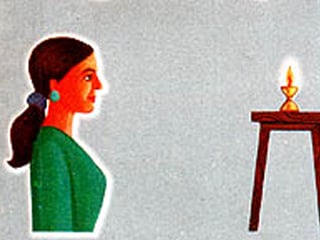
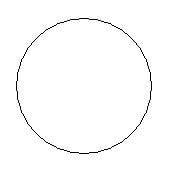
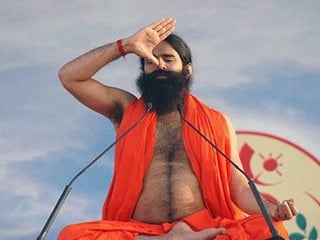 How does pranayam facilitate activation of the kundalini?
How does pranayam facilitate activation of the kundalini?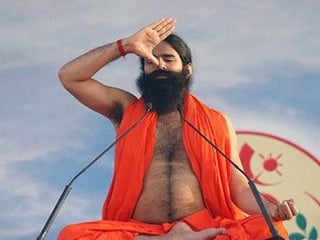 How to gain control over mind by practicing pranayam?
How to gain control over mind by practicing pranayam?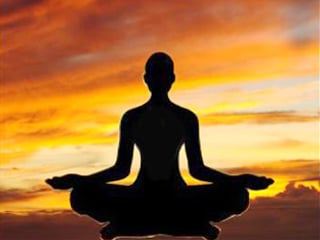 Righteousness - key to control desires
Righteousness - key to control desires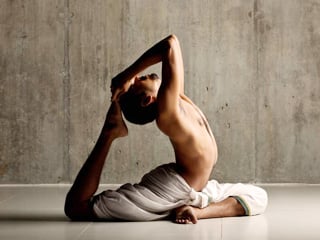 What is the motive behind enduring pain in Hathayoga?
What is the motive behind enduring pain in Hathayoga?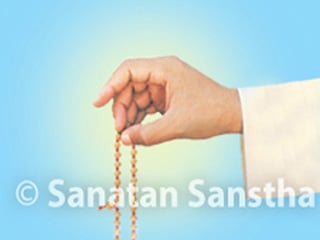 Chanting of Lord's Name: Best tool for observing silence ( maun vrat )
Chanting of Lord's Name: Best tool for observing silence ( maun vrat )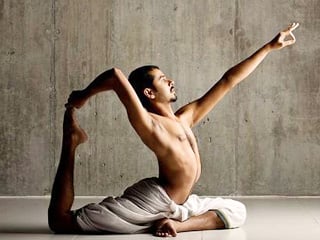 How does mudra assist in meditation?
How does mudra assist in meditation?